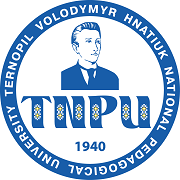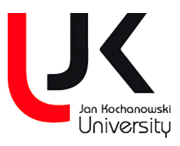POST-EDITING AS AN IMPORTANT ASPECT OF TRAINING FUTURE TRANSLATORS
DOI:
https://doi.org/10.32782/2307-1222.2025-59-23Keywords:
automated translation, editing, machine translation, post-editing, translatorAbstract
The translation industry is undergoing significant changes driven by globalisation and internationalisation, which are affecting the work of translators. This is especially true for the growth in translation workloads due to the increasing volume of documents and information exchanged between countries around the world that need to be translated. All of these factors lead to increased competition among translators, which requires high professionalism and the use of the latest technologies in the translation process. One of the most important aspects is post-editing of machine translation, which includes correcting the results of translation performed by automated systems. Machine translation with the help of neural networks and artificial intelligence can reduce human resource costs and increase translation speed. However, given the lack of full accuracy in automated systems, it is important to use post-editing to achieve a high-quality result. The purpose of this article is to study the post-editing process, identify its main characteristics and factors that affect the success of this process. The features of post-editing as a translation activity are identified; the objective factors influencing the post-editing process include the text itself, the language pair, the system used, the level of post-editing quality (partial, medium or complete), as well as the specifics of the subject matter and genre. At the same time, subjective factors include the individual characteristics of the translator’s work, the time allocated for editing, the experience and qualifications of the translators, and their deep understanding of the context and culture of both languages.In general, post-editing plays an important role in the training of translation specialists, as it allows them to work effectively with the results of machine translation while maintaining a high level of quality in the final product. At the same time, post-editing training requires special attention and differs significantly from other types of translation activities.
References
Бондаренко О., Бондаренко К. Постредагування машинного перекладу як складова послуги локалізації. Науковий вісник Міжнародного гуманітарного університету. Серія «Філологія». 2024. № 66. С. 216–219. https://doi.org/10.32782/2409-1154.2024.66.48.
Дорофеєва М. Галузевий переклад, редагування і постредагування в системі компетентностей перекладача. Науковий вісник Міжнародного гуманітарного університету. Серія «Філологія». 2021. № 52. Т. 2. С. 133–136. https://doi.org/10.32841/2409-1154.2021.52-2.32.
Ольховська А. Машинний переклад та постредагування у фаховій підготовці майбутніх перекладачів. Фаховий та художній переклад: теорія, методологія, практика : збірник наукових праць / за заг. ред. А. Гудманяна, С. Сидоренка. Київ : Аграр Медіа Груп, 2020. С. 268–274. https://doi.org/10.24195/2616-5317-2020-30-7.
Корольова Т., Жмаєва Н., Колчаг Ю. Постредагування при машинному перекладі. Науковий вісник Південноукраїнського національного педагогічного університету імені К.Д. Ушинського. 2020. № 30. С. 102–119.
ISO 18587:2017. Translation services. Post-editing of machine translation output. Requirements. URL: https://www.iso.org/standard/62970.html.
Kliffer M. Post-editing machine translation as an FSL exercise. Porta Linguarum Revista Internacional de Didáctica de las Lenguas Extranjeras. 2008. Vol. 9. P. 53–68. https://doi.org/10.30827/Digibug.31745.
Koponen M. Is machine translation post-editing worth the effort? A survey of research into post-editing and effort. The Journal of Specialised Translation. 2016. № 25. URL: https://www.researchgate.net/publication/299345698 (дата звернення: 24.01.2025).
Niño A. Machine translation in foreign language learning: Language learners’ and tutors’ perceptions of its advantages and disadvantages. ReCALL. 2009. Vol. 21. № 2. P. 241–258.
Quah C.K. Translation and Technology. Hampshire ; New York : Palgrave Macmillan, 2006. 248 p.
Sun D.Y. Application of Post-Editing in Foreign Language Teaching: Problems and Challenges. Canadian Social Science. 2017. Vol. 13. № 7. P. 1–5. DOI: 10.3968/9698.
TAUS. TAUS Post-editing Guidelines. URL: https://taus-website-media.s3.amazonaws.com/images/stories/guidelines/taus-cngl-machine-translationpostediting-guidelines.pdf (дата звернення: 20.01.2025).
Zhang H., Torres-Hostench O. Training in Machine Translation Post-Editing for Foreign Language Students. Language Learning & Technology. 2022. Vol. 26. № 1. P. 1–17. DOI: http://hdl.handle.net/10125/73466.










